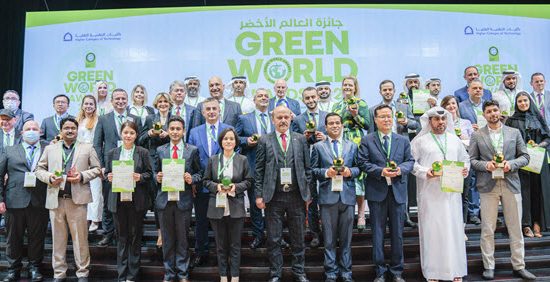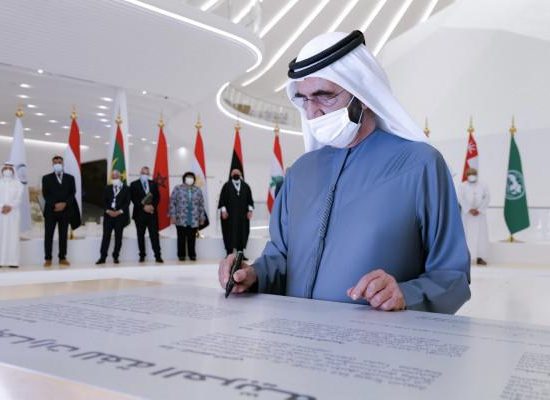QATAR. On Sept. 18, 2015, Standard & Poor’s Ratings Services affirmed its ‘AA’ long-term and ‘A-1+’ short-term foreign and local currency sovereign credit ratings on the State of Qatar. The outlook is stable.
We also affirmed the ‘AA’ long-term issue ratings on the bonds issued by Qatari Diar Finance Q.S.C. and SoQ Sukuk A Q.S.C.
RATIONALE
Qatar is a wealthy economy; we estimate its GDP per capita at $81,000 in 2015. The hydrocarbons sector creates about 55% of Qatar’s GDP, 90% of government revenues (oil and gas taxes and royalties, plus dividends from Qatar Petroleum), and 85% of exports. We view Qatar’s economy as undiversified.
Qatar’s economy grew by about 6% over the last three years, but we expect growth to slow to about 4% during 2015-2018. The hydrocarbon sector will likely continue to stagnate. The non-oil sector, on the other hand, should remain buoyant, thanks to public investment and supported by the growing population.
We understand that the government is committed to the large public infrastructure program and its efforts to diversify the economy, while maintaining its strategic position in the global natural gas market.
In our view, medium- to long-term challenges to Qatar’s competitive position in the liquefied natural gas (LNG) market are likely to come from new shale production, Russia’s gas pipeline to China, and increased pressure to delink LNG contracts from the price of oil (see “Credit FAQ: What Is The Significance Of The Shale Phenomenon For Gulf Oil And Gas Producers?,” published Nov. 18, 2013, on RatingsDirect).
Nevertheless, Qatar’s strategy has been to diversify into all major markets, adjusting the mix of destinations and contract types according to market needs. Moreover, the majority of its gas exports are under long-term contracts, which provides some certainty regarding the volumes sold.
We also expect that Qatar will maintain its cost advantage over many new projects in other countries. Since Qatar produces and exports significant quantities of condensate and natural gas liquids associated with natural gas, its effective average cost of producing LNG is much lower.
We assume that Qatar’s oil production will decline as output from maturing fields contracts. We expect an average annual decline in crude oil production of about 5% over 2015-2018.
We project largely flat gas output (LNG and natural gas), given Qatar’s moratorium on new investments in the sector, while condensate volumes will likely increase by about 5% per year over the same period.
The large drop in oil and natural gas prices and the government’s public investment program have led to a deterioration of the fiscal balance beginningin 2014. We expect the general government balance to fall into a deficit of 4.5% of GDP in 2016, from a modest fiscal surplus in 2015. Our outlook assumes that public spending will continue as the investment program advances.
We also project a decline in hydrocarbon income, namely the financial transfers from Qatar Petroleum to the budget, which come to the government budget with a lag.
The government intends to rationalize and outsource part of its operations and to award more projects to the private sector, though whether the desired level of private sector participation can be achieved remains to be seen, in our view.
In the context of lower hydrocarbon revenues and increasing capital spending, the government is prioritizing existing projects, focusing funding on the highest-priority and strategic investments. We expect national development strategy projects to improve the economy’s productive capacity and strengthen Qatar’s competitive position. We understand that the government plans to award about $220 billion of large-scale investment projects over the next 10 years.
The program will focus on infrastructure, education, and health, and we expect the majority of these projects to be completed ahead of the football World Cup
in 2022, which Qatar is hosting.
Alongside government investments funded through the budget, public-enterprise and private-sector spending on the national development strategy is likely to be largely funded by borrowing from domestic financial institutions. This may cause banks’ net external liability positions to widen and their loan-to-deposit ratios to rise, as we expect deposit growth in the Qatari banking system to gradually decelerate due to low oil prices.
The ratio of domestic credit to total deposits in the Qatari banking system was 107% as of June 2015, slightly up from 106% at end-2014. Public sector deposits represented about 37% of the resident deposit base in June 2015, down from 39%at year-end 2014.
We project Qatar’s external surpluses to narrow substantially in the medium term as export receipts fall sharply between now and the end of 2016, while import demand remains strong. The transfers and income accounts of the current account will remain in deficit, the former due to remittance outflows as a result of the expatriate population and the latter due to payments to the foreign firms that partner with Qatari companies in the oil and gas industry.
Qatar’s net external asset position will remain strong at about 250% of current account receipts in 2015-2018. Qatar has accumulated considerable foreign assets over the past decade, as a result of its development of its natural resources. We forecast that the general government net asset position will also stay robust, estimated at about 100% of GDP in 2015. Qatar has the third-largest proved reserves of natural gas in the world. We expect Qatar’s reserves to provide many decades of production at the current levels.
Domestic political and social stability prevails, despite what we view as only gradual political modernization and a highly centralized decision-making process. In our view, the country’s public institutions are still relatively undeveloped compared with those of most ‘AA’ rated sovereigns. Executive power remains in the hands of the emir.
In our view, the predictability of future policy responses is tempered by weak political institutions, although in our base case we assume that policy will continue to focus on prudent development of the hydrocarbon sector, alongside further economic diversification.
In addition, material data gaps exist and transparency is limited, by international standards. In particular, the government neither discloses nor reports earnings on its fiscal assets. In our view, monetary policy flexibility is limited because the exchange rate is fixed to the U.S. dollar.
OUTLOOK
The stable outlook reflects our view of balanced risks to the ratings over the next two years. We believe that Qatar’s economy will remain resilient, supported by strong macroeconomic fundamentals, but we also anticipate continued institutional weaknesses and limited monetary flexibility over the next two years.
We could lower the ratings on Qatar if developments in hydrocarbon production and prices, or in the banking sector, were to significantly weaken the country’s external or fiscal positions; for example, if the government’s gross liquid assets fall significantly below 100% of GDP by our estimates.
We could raise the ratings on Qatar if we saw domestic institutions mature faster than expected, alongside significant improvements in transparency regarding government assets and external data quality.
About Standard & Poor’s Ratings Services
Standard & Poor’s Ratings Services, a part of McGraw Hill Financial (NYSE: MHFI), is the world’s leading provider of independent credit risk research and benchmarks. We have approximately 1.2 million credit ratings outstanding on government, corporate, financial sector and structured finance entities and securities.
With nearly 1,400 credit analysts in 26 countries, and more than 150 years’ experience of assessing credit risk, we offer a unique combination of global coverage and local insight. Our research and opinions about relative credit risk provide market participants with information and independent benchmarks that help to support the growth of transparent, liquid debt markets worldwide
This entry passed through the Full-Text RSS service – if this is your content and you’re reading it on someone else’s site, please read the FAQ at fivefilters.org/content-only/faq.php#publishers.








